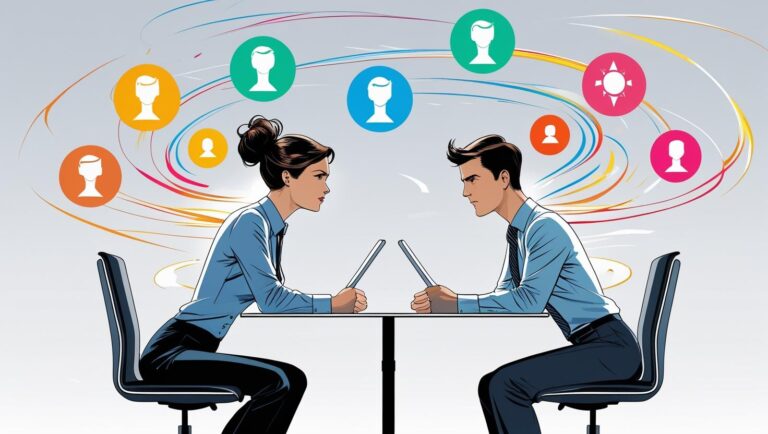Understanding Myers-Briggs Personality Types for Better Team Development
Introduction
If you’ve ever led a team, you’ll know this truth: people don’t all think, work, or learn in the same way. Some want to get straight to the point, others need time to reflect. Some thrive in brainstorming sessions, others prefer structured plans. And while diversity is one of the greatest strengths in any workplace, it can also be one of the toughest challenges to manage.
This is where personality tools come in. Among them, the Myers-Briggs Type Indicator (MBTI) is one of the most widely used across the globe. Although sometimes dismissed as a “corporate icebreaker,” when used with intention, MBTI can be a powerful framework for team development, leadership, and learning design. It gives HR professionals and L&D specialists language to understand how individuals approach the world, how they make decisions, and how they prefer to learn.
In this article, we’ll unpack the MBTI framework, explore its 16 personality types, and show how it can be applied to create stronger, more engaged teams. We’ll also look at the limitations of MBTI and how to use it responsibly in today’s workplaces.
What is MBTI?
The Myers-Briggs Type Indicator was developed by Isabel Briggs Myers and Katharine Cook Briggs in the mid-20th century, inspired by Carl Jung’s theories of psychological types. At its core, MBTI doesn’t measure skill, intelligence, or ability. Instead, it identifies preferences—the natural ways people are inclined to gather information, process it, and make choices.
The framework is built on four dichotomies:
Extraversion (E) vs. Introversion (I): Do you draw energy from interaction with others, or from reflection and solitude?
Sensing (S) vs. Intuition (N): Do you prefer concrete facts and details, or abstract ideas and big-picture thinking?
Thinking (T) vs. Feeling (F): Do you make decisions based primarily on logic, or on values and relationships?
Judging (J) vs. Perceiving (P): Do you prefer structure, plans, and closure, or flexibility and spontaneity?
When you combine these four dimensions, you get 16 possible personality types. For example, someone who prefers Introversion, Sensing, Thinking, and Judging would be classified as ISTJ. Each type has its own tendencies, strengths, and blind spots.
Why MBTI Matters for Team Development
It’s easy to assume that everyone should just “get on with it” in the workplace. But in reality, a team’s performance often hinges on how well its members understand and respect each other’s working styles. MBTI gives a framework for this understanding.
For HR and L&D professionals, MBTI can:
Shape learning experiences. Introverts might prefer e-learning or reflection activities, while extraverts thrive in workshops and discussions.
Improve communication. Knowing whether a colleague is more data-driven (Thinking) or values-driven (Feeling) helps avoid misunderstandings.
Strengthen team cohesion. When team members recognise differences as strengths rather than irritations, collaboration improves.
Support career growth. Understanding preferences can highlight natural strengths and development areas, helping with succession planning and coaching.
Let’s break down how the 16 MBTI types show up in learning and teamwork.
A Closer Look at the 16 MBTI Personality Types
Each type has something unique to offer a team. For clarity, let’s group them by shared characteristics and give examples of how they engage in development.
ISTJ and ISFJ: The Steady Guardians
These individuals are practical, responsible, and dependable. They like structure and clarity. In training, they value step-by-step instructions and dislike ambiguity. An ISTJ may excel at compliance training or process management, while an ISFJ may shine in people-support roles, provided the training links clearly to real-world application.
INFJ and INTJ: The Visionary Strategists
Both types are future-focused and thrive when they can connect learning to a bigger purpose. INFJs often gravitate towards socially impactful projects, while INTJs enjoy autonomous, challenge-based development. Give them space for reflection and problem-solving, and they’ll run with it.
ISTP and ISFP: The Flexible Creators
These types like hands-on, real-world learning. ISTPs enjoy technical problem-solving, while ISFPs value creative, experiential learning. Both prefer to experiment rather than follow rigid plans. A simulation or role-play exercise works better than a long lecture.
INFP and INTP: The Thoughtful Explorers
INFPs are idealistic and motivated by meaning, while INTPs love theory and independent research. Both need space to think, but INFPs lean towards personal growth, and INTPs towards intellectual puzzles. Provide room for exploration, and they’ll surprise you with insight.
ESTP and ESFP: The Energetic Doers
Fast-paced, action-oriented, and outgoing, these types thrive in dynamic, interactive training environments. An ESTP will jump into a challenge with energy, while an ESFP will bring enthusiasm and people-focus. Long manuals won’t work—they need movement and participation.
ENFP and ENTP: The Enthusiastic Innovators
Both types love possibilities and new ideas. ENFPs thrive on collaboration and storytelling, while ENTPs enjoy debate and brainstorming. They can inject energy into a training session, but facilitators need to manage their enthusiasm so quieter voices aren’t lost.
ESTJ and ESFJ: The Organised Builders
These types like structure, clarity, and outcomes. ESTJs respond well to clear KPIs and measurable goals, while ESFJs appreciate inclusivity and people-first approaches. Training that combines structure with collaboration will engage them best.
ENFJ and ENTJ: The Confident Leaders
Both are natural leaders. ENFJs are inspiring and people-focused, ENTJs are decisive and goal-driven. ENFJs thrive in purpose-driven group work, while ENTJs want leadership development and strategic challenges. Give them space to influence, and they’ll take ownership of the learning journey.
Applying MBTI in Training and Facilitation
Understanding the 16 types is helpful, but what does this mean in practice? Let’s explore how the four dichotomies influence learning design.
Introverts vs. Extraverts
Introverts often prefer self-paced learning, quiet reflection, or one-to-one coaching. Extraverts, by contrast, thrive on discussion, group activities, and interactive workshops. A balanced program should include both—perhaps pre-reading for introverts followed by group dialogue for extraverts.
Sensors vs. Intuitives
Sensors appreciate detail, clarity, and practical application. They respond well to concrete examples, demonstrations, and structured guides. Intuitives enjoy big-picture thinking and possibilities; they want to explore “why” and “what if” questions. Blending real-world application with conceptual discussion caters to both.
Thinkers vs. Feelers
Thinkers value logic, data, and structure. They prefer objective feedback and frameworks they can apply. Feelers value harmony, stories, and human connection. They’re motivated when training speaks to values or relationships. Combining case studies (for thinkers) with storytelling (for feelers) creates balance.
Judgers vs. Perceivers
Judgers like clear plans, timelines, and deliverables. Perceivers prefer flexibility and spontaneity. A program that offers structured milestones with optional exploration allows both to engage without frustration.
Real-World Example: MBTI in Team Upskilling
Imagine a hybrid office rolling out a new digital tool. The team includes:
Two ENFPs who love energy and collaboration.
Three ISTJs who value routine and solo work.
One INTP who questions everything and prefers independent research.
Two ESFJs who prioritise teamwork and harmony.
Two ENTJs eager for leadership and outcomes.
A one-size-fits-all rollout would miss the mark. Instead, HR could design a blended approach: a kick-off workshop to excite the ENFPs and ESFJs, structured reading material for ISTJs and INTP, and leadership challenges for ENTJs. By respecting styles, the rollout not only teaches the new tool but also strengthens trust and engagement across the team.
The Limitations of MBTI
While MBTI is widely used, it isn’t perfect. Critics argue it lacks strong scientific validity, and indeed, it should never be used as a hiring tool or a definitive measure of ability. The key is to treat MBTI as a conversation starter, not a box to put people in.
People are more complex than four letters, and preferences can shift depending on context. For example, someone who usually identifies as introverted may act extroverted in familiar settings. MBTI offers a lens, not a label.
Best practice is to combine MBTI with other tools like CliftonStrengths, DISC, or 360-degree feedback to get a fuller picture of individuals and teams.
Practical Guidance for HR and L&D Professionals
If you’re considering using MBTI in your organisation, a few principles make the difference:
Keep it voluntary. Employees should feel invited, not compelled, to explore MBTI.
Always frame it positively. The goal is understanding and growth, not limitation.
Use it for development, not selection. MBTI should guide coaching, team-building, and learning—not decide who gets a job.
Encourage reflection and dialogue. The real value is in the conversations that follow, not just the test results.
Revisit it over time. People grow, and their preferences may shift. Treat MBTI as a tool for ongoing development.
Conclusion
In today’s diverse workplaces, a one-size-fits-all approach to learning and development simply doesn’t work. Teams are made up of individuals who think, act, and learn differently. The MBTI framework offers a structured way to understand and respect these differences, making training more inclusive and team development more effective.
At its best, MBTI isn’t about labels—it’s about unlocking potential. By recognising personality differences, HR and L&D professionals can design learning that resonates with every type of learner, improve communication across teams, and create development pathways that feel authentic rather than forced.
And that’s the real power of MBTI: not putting people in boxes, but helping them find the conditions where they can thrive.



